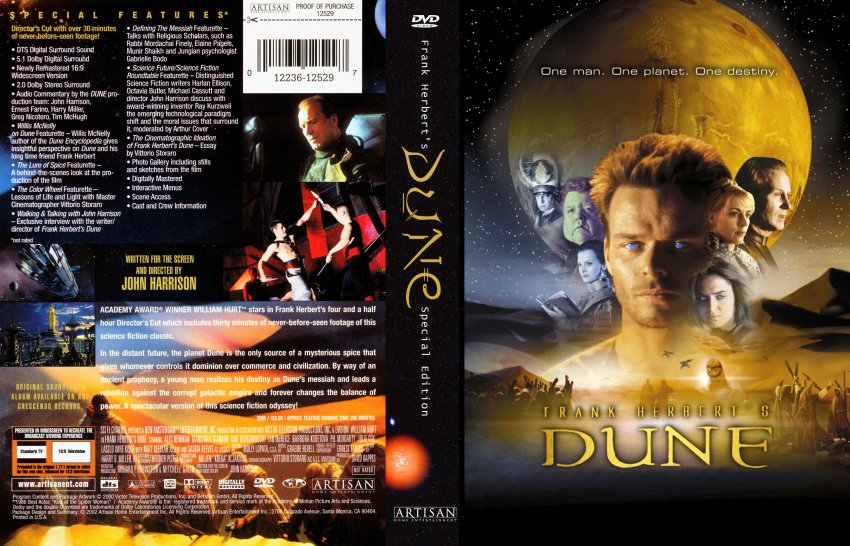
It can lead to some odd situations, however, where the Fremen, native after a fashion, to the planet of Dune, have a variety of accents, from Czech (Chani and Liet Kynes), to German (Stilgar), to English (Otheym, although he is played, I believe by a Czech actor).

Dune 2000 dvd series#
Shot in Prague in the Czech Republic, the series features a truly international cast and the variety of accents does give it a somewhat otherworldly feel. When it comes to the worms’ human co-stars however, the results are a little more hit and miss. With a far more armored appearance than Lynch’s versions, as well as far bigger “teeth,” they are an imposing presence.

The one element that manages to avoid this, surprisingly, are the great makers themselves, Shai-Hulud or the Sandworms. It might have been the pinnacle of technology at the time, but unlike the dinosaurs in the first Jurassic Park, the shiny “CGI-ness,” and simplicity of the models, is all too clear under the harsh glare of Dune’s desert sun. While the physical sets are lavish and imposing, with impressively high ceilings, when it comes to exterior shots, the CGI has not aged well. Watching the miniseries now, however, the very first thing that jumps out at you, unfortunately, is the late 90’s/early aughts CGI special effects. Spread out over three episodes, and clocking in at almost four and a half hours, the miniseries gives Dune far more room to breathe than the two hours and 17 minutes of the final release of Lynch’s film. They started by giving the book the one thing Lynch couldn’t: time. With this adaptation, the filmmakers, which included director/writer/composer/actor John Harrison, cinematographer Vittorio Storaro ( Apocalypse Now, Dick Tracy, Ladyhawke, The Last Emperor) and the Hallmark channel (!) set out to remedy that. While David Lynch’s take on the Herbert’s sci-fi classic in 1984 provided some… arresting visuals, the story of galactic politics, mind and reality warping space, and the young Paul Atreides’ escape from his family’s enemies, only to return at the head of an army of fanatical warriors, ended up so truncated, that the majority of the book’s impact was lost. His name was Paul Atreides, aka Muad’Dib, he lived almost 20,000 years in the future, and he last appeared on our screens in the Sci-Fi Channel’s adaptation of Frank Herbert’s Dune in 2000, as well as its sequel series Children of Dune, three years later.

No, his name wasn’t Anakin, or even Luke, Skywalker and he didn’t come from a galaxy far, far away. In this instalment, Iain McNally revisits the Sci-Fi Channel’s ambitious mini-series from the year 2000.Ģ0 years ago, a young man emerged from a desert planet and changed the fate of the galaxy forever. As we eagerly await Denis Villeneuve’s take on Frank Herbert’s Dune, we’ve put together a series of articles on how the franchise has been adapted, depicted, and received in the 55 years since it was first published.


 0 kommentar(er)
0 kommentar(er)
